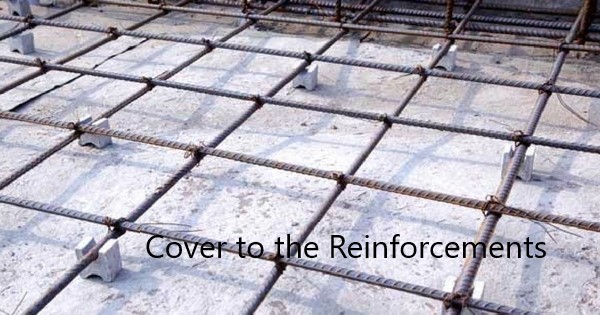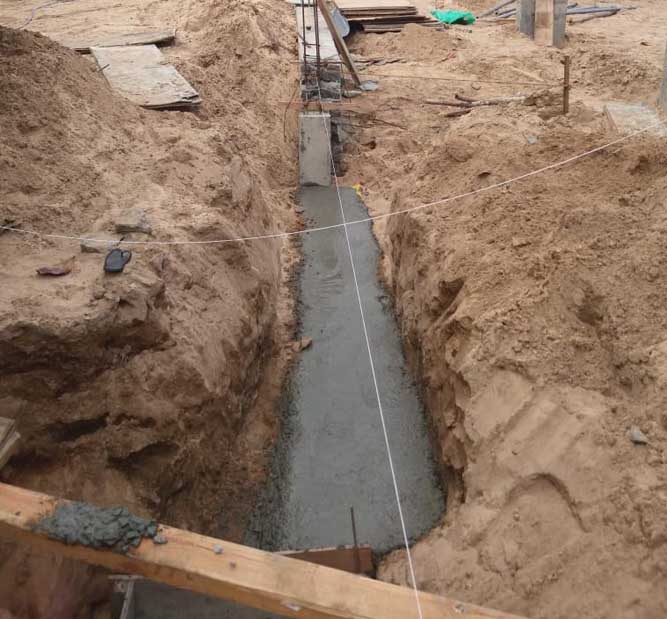The method of strengthening of concrete beam is discussed in this article. When there are signs of failure or excessive deformations, it may be required to strengthen the reinforced concrete beam.
Early notice of failure could be identified from the excessive deflection and flexural cracking of the beam. These kinds of situations shall be assessed in consultation with a competent structural engineer.
Why We Need Strengthening of Reinforced Concrete Beam
Generally, the strengthening of the concrete beam is required when it is concluded that there is a risk of structural failure or when it is required to improve the structural capacity in instances like increasing beam loads.
Flexural Cracking of Reinforced Concrete Beam
The beam can be cracked due the flexural failures. This could be due to some of the issues discussed in the latter part of this article. Increasing the load on the beam accidentally, design errors, low compressive strength of concrete, incorrect construction practices, etc. could lead to the cracking of the concrete beam due to inadequate structural strength.
Durability Issues
The main element that affects how long a structure will last according to its design is its durability. Failure may result from deteriorating concrete, corroding reinforcing, and other structural deterioration.
Carbonation, chloride attacks, and other factors may cause the reinforcement to corrode and reduce the structural capability. When we talk about the durability of a structure, we also need to talk about the durability of concrete.
Increase Loads on Beam
During the construction or after the construction due to the changes in the architectural drawings, the load on the beams could be increased. In this kind of situation, if the grade of the concrete and the arrangement of reinforcement are known, the structural capacity of the beam can be assessed. When the load-induced action increases the capacity of the beam, strengthening shall be done.
Low Strength of Concrete
Concrete may not have the required strength due to problems with construction or mix design or failure made during the mixing of concrete. In these situations, we evaluate the column beam capacity about the available concrete strength will be done. If it is insufficient, we must strengthen the column.
Method of Concrete Beam Strengthening
When there are signs of beam failure, necessary precautions shall be taken to avoid such failures. Beam shall be provided with additional support to reduce the further avoid further deflections.
The following methods can be used to strengthen the beams.
Increase the size of the Depth of the Beam and Resizing
When there is a structural capacity issue, in those situations, the depth of the beam will be increased. If the beam with deteriorated concrete, we could repair the side of the beam in addition to increasing the depth of the beam.
The following figure indicates the method of fixing the reinforcement of a beam.
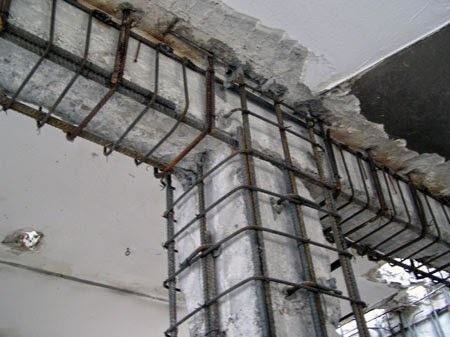
The following steps could be followed when Strengthening Concrete beams.
- Initially, the structural strength of the beam will be assessed. Based on that the method of retrofitting the beam will be determined. Under the beam retrofitting, the type of beam strengthening method and other technical requirements such as reinforcement bar diameters, depth of the new beams, etc. will be finalized.
- If the beam is in good condition, the concrete surface could be chipped adequately. When we are strengthening the deteriorated concrete beam, all the deteriorated concrete shall be removed. This shall be done under close supervision, and it shall be done under the guidance of the structural engineer.
- We may add some dowels bar to improve the bonding and to avoid the separation of new concrete from old concrete.
- Then the reinforcement can be tied.
- As possible, the bonding agent could be applied following the supplier’s specification.
Steel Supports
Steel plate or steel section such as universal beam or column fixed under the beam to increase its capacity. These kinds of modifications are often made to a concrete beam that is in good condition. The implementation of this strategy is more appropriate when the beam loads increase as a result of some addition to the structures.
The following figure indicates the beam stiffened with steel plates.
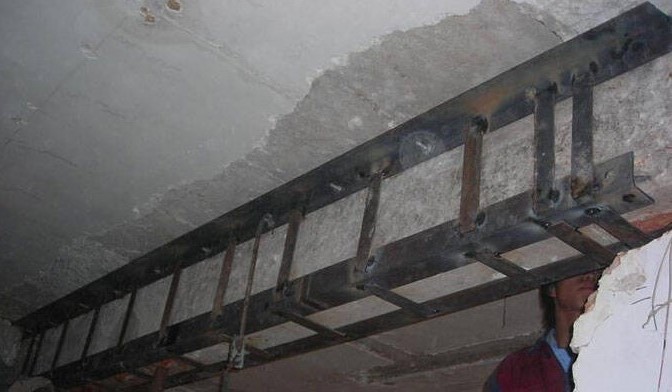
FRP Jacketing of Beam
Fiber cloth reinforcement technology and fiber plate reinforcement technology are the two forms of FRP jacketing technology. It is an innovative strategy for technical support and restoration. Resin bonding materials are typically utilized to adhere fiber-reinforced polymer (FRP) products to the concrete surface and the stressed portions of the components to achieve the reinforcement of the building structure.
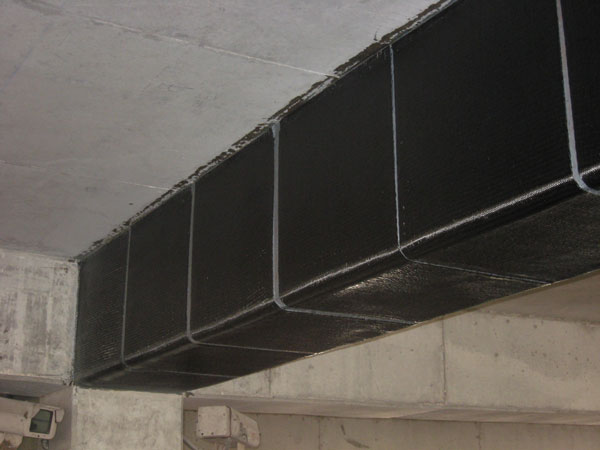
High strength, low weight, quicker building time, etc. are benefits of this technology. Additionally, strengthening operations for additional parts like beams and slabs are carried out using this method.

